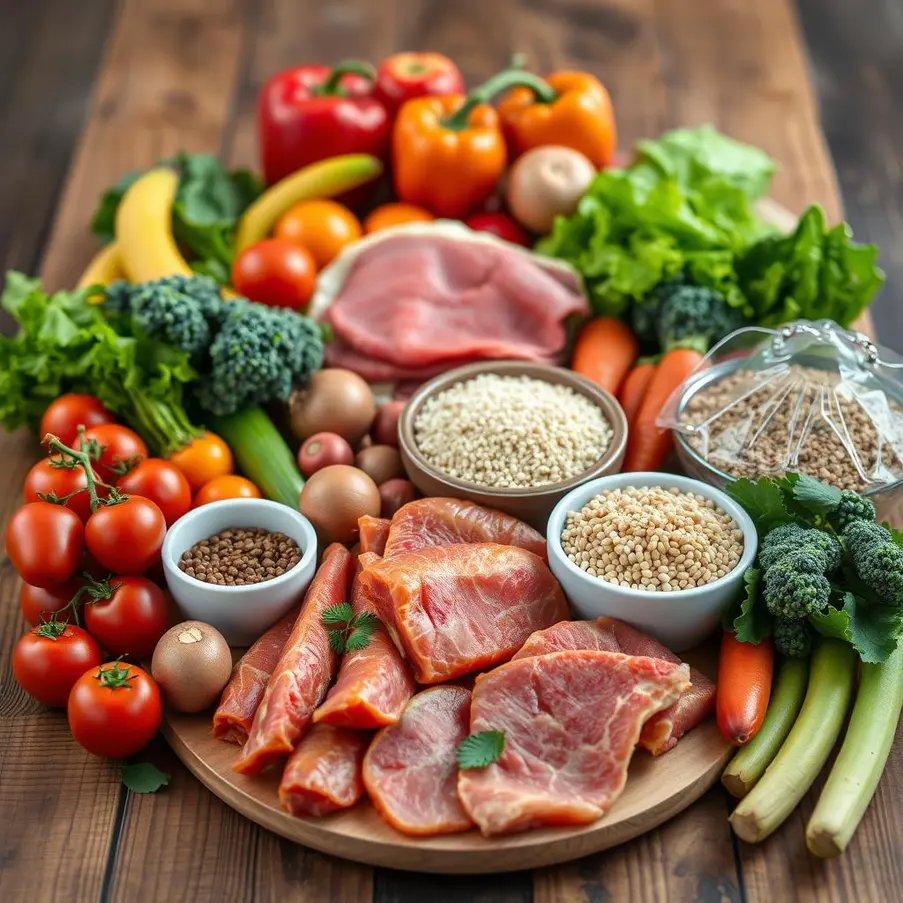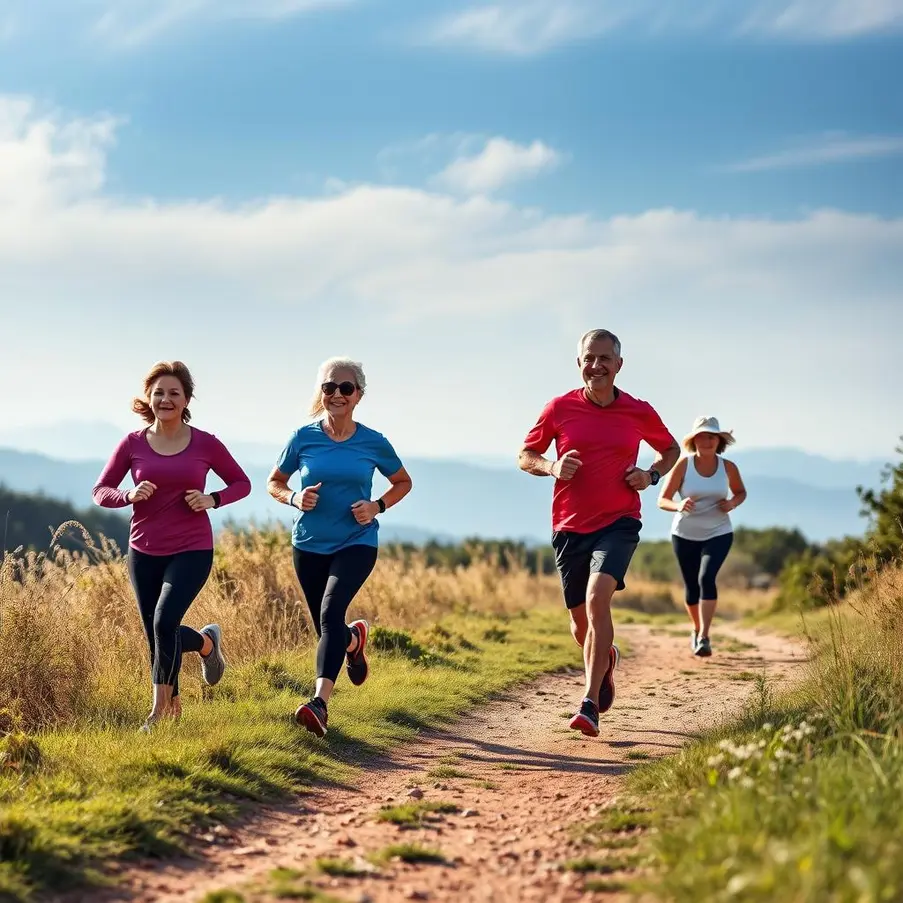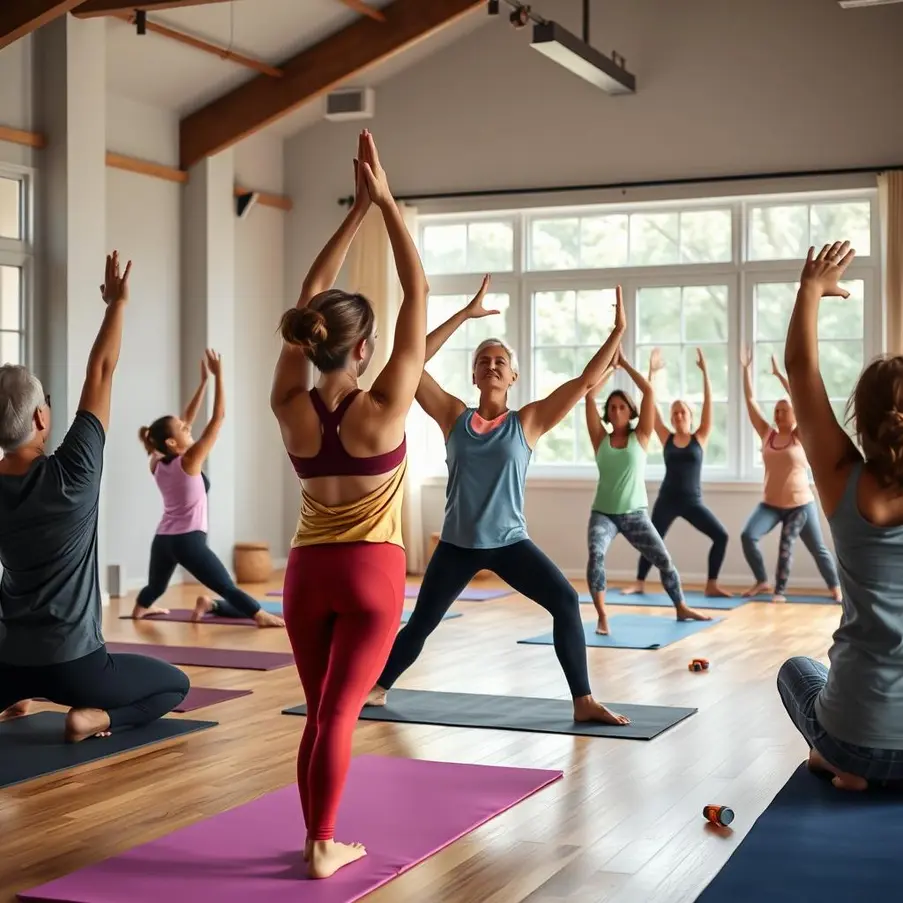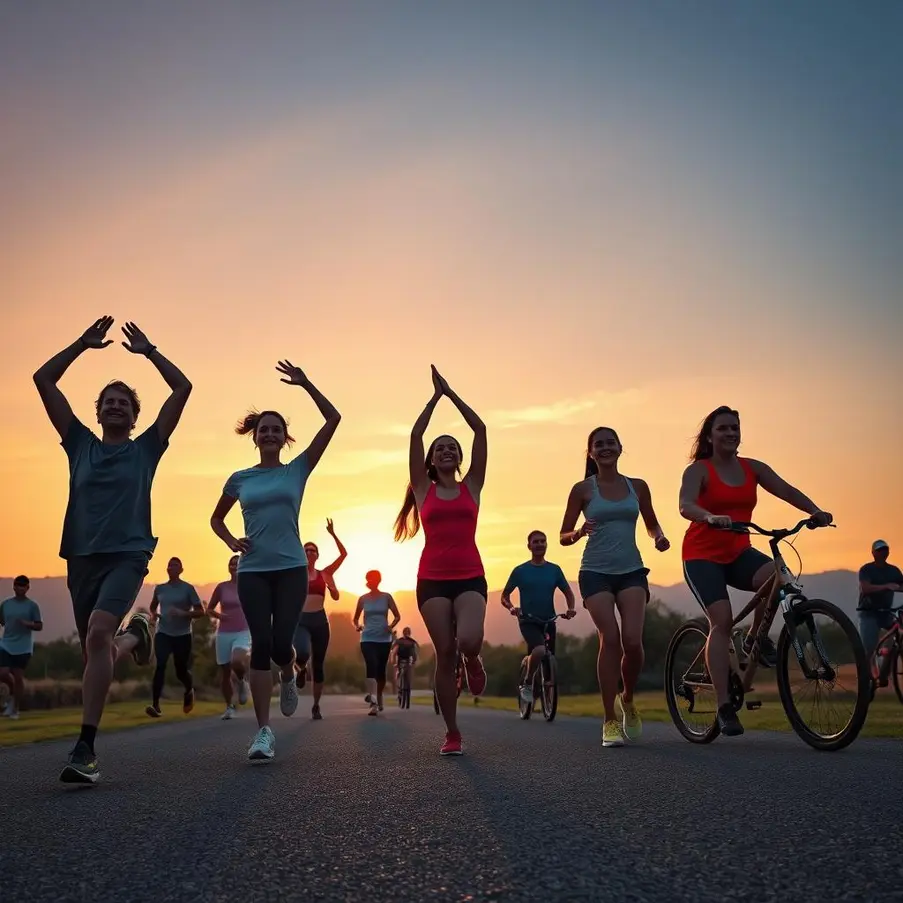Fitness is not just a goal but a lifestyle. Whether you’re 25 or 55, the journey to physical wellness is a dynamic process full of challenges and triumphs. It is about more than just shedding pounds or gaining muscle; it is about increasing longevity, boosting energy, and enhancing your quality of life. In the following chapters, you will learn how to ignite the true potential within, break barriers, and embrace an energetic and confident lifestyle. This fitness journey is designed for everyone, regardless of where you start. Get ready to be empowered and inspired to transform your life through fitness. Embrace the power within you, and take the first step toward a healthier you.
Awakening the Inner Athlete

The concept of the inner athlete suggests that everyone holds potential for physical greatness, regardless of current fitness levels. This isn’t just about achieving peak physical prowess; it’s about tapping into an innate drive to push boundaries and transform lifestyle. Awakening this potential starts with the mindset that anyone can be an athlete, with perseverance being the catalyst.
Understanding that fitness is adaptable paves the way for setting achievable goals. These should be personal and meaningful, focusing on both short-term and long-term aspirations. For some, it may be mastering a new yoga pose; for others, it might be completing a marathon. The key here is to embrace individual journeys, recognizing that the path to igniting your inner athlete is unique.
A critical part of this journey is developing a tailored routine that aligns with personal interests and capabilities. It’s crucial to incorporate exercises that are both enjoyable and challenging. Finding pleasure in movement ensures consistency and fosters growth. For those ready to start building muscle at home, exploring resources on the best home workout equipment can provide insights into an effective setup.
Breaking routines into smaller, manageable tasks can boost confidence and provide a sense of accomplishment. As progress is made, it naturally feeds motivation and inspires continued dedication. Equally important is to be flexible and adjust routines as needed, allowing space for evolution and avoiding stagnancy.
Ultimately, awakening the inner athlete is about reclaiming control over one’s body and abilities. It’s not confined to age or initial skill level but thrives on an impassioned mindset and a structured plan. By focusing inward and nurturing this latent potential, anyone can elevate their fitness, transcend perceived limits, and enrich their overall wellbeing.
Fueling Your Body: Nutrition Essentials

Nutrition is the cornerstone of any successful fitness journey, acting as the primary source of energy for both body and mind. To sustain an active lifestyle, it is vital to focus on balanced meals, adequate hydration, and mindful eating practices. Balanced meals, rich in macronutrients and micronutrients, enable optimal performance and recovery. Aiming for a plate that features a mix of lean proteins, whole grains, and colorful vegetables offers a solid foundation for energy and vitality.
Staying hydrated is equally important. Water acts as a carrier of nutrients to cells and regulates body temperature. Drink plenty of fluids throughout the day, especially before, during, and after workouts. A good rule of thumb is to drink a glass of water every hour and more during physical activities.
Mindful eating encourages a deeper connection with food, preventing overeating and allowing for better digestion. Focus on the experience of each meal, savoring flavors and textures without distractions.
Here are a few simple meal ideas for individuals aged 25 to 55:
- Breakfast: Start with overnight oats topped with berries and a handful of nuts. This meal is rich in fiber and healthy fats.
- Lunch: A quinoa salad with grilled chicken, cherry tomatoes, spinach, and a lemon-tahini dressing provides a balance of protein and vegetables.
- Dinner: Baked salmon served with steamed broccoli and sweet potatoes offers a seafood variety packed with omega-3 fatty acids.
For those looking to perform exercises at home, combining a nutritious diet with suitable fitness equipment can significantly enhance results. Consider exploring some of the best home workout equipment tailored for efficient at-home routines.
Incorporating these nutrition essentials into your daily routine leads to a healthier, more energized life, ready to tackle any fitness challenge.
Building Strength: The Core of Fitness
Strength training is essential for a healthy body, regardless of age. It not only enhances muscle mass but also boosts metabolism, improves bone density, and increases flexibility. At its core, strength training emphasizes resistance exercises aimed at developing muscle strength and endurance.
Focusing on core workouts delivers profound benefits. A strong core stabilizes the body, enhances balance, and supports other movements, whether lifting groceries or running marathons. To address these needs, incorporate exercises such as planks, bridges, and Russian twists. These are adaptable for all fitness levels and can be easily modified to increase or decrease intensity.
Resistance training plays a pivotal role in strength building. Using resistance bands or adjustable dumbbells helps tailor intensity to individual needs. Resistance bands are versatile tools that provide varying degrees of resistance, making them perfect for people from 25 to 55. They can target specific muscle groups, offering a comprehensive workout without bulky equipment.
Integrating compound movements is another effective strategy. Exercises like squats, deadlifts, and push-ups engage multiple muscle groups simultaneously, enhancing overall strength and promoting efficient workouts. These exercises contribute to functional fitness, effectively increasing strength and stability needed for daily activities.
Regardless of age or fitness level, it is crucial to start gradually and increase intensity over time. Prioritize proper form to prevent injuries and maximize benefits. Listening to your body and adapting the routine as needed ensures sustained progress.
Ultimately, strength training is not just about building muscles; it’s about empowering life. Through consistent practice, individuals can enhance their physical abilities, bolster their confidence, and transform their approach to daily challenges. By nurturing strength from within, one can truly unleash the power of fitness.
The Power of Cardio: Heart Health and Endurance

Cardiovascular exercises are essential for maintaining a healthy heart and improving overall endurance. Engaging in regular cardio activities strengthens the heart muscle, enhancing its efficiency and reducing the risk of heart disease. By pumping blood more effectively, the heart supports better circulation, aiding in the delivery of oxygen and nutrients throughout the body.
Incorporating a variety of cardio workouts into your routine not only supports heart health but also builds endurance. This stamina boost can help you tackle daily activities with ease. For those aged 25 to 55, choosing the right type of cardio can depend on personal preferences and physical condition.
Running is a versatile option, known for burning calories and strengthening the cardiovascular system. It can be easily adapted to different fitness levels, from brisk walking to intense sprint intervals. To keep things interesting, consider varying your routes and incorporating hills to challenge yourself further.
Cycling offers a low-impact alternative that’s gentle on the joints, making it ideal for individuals with joint concerns. Whether you’re using a stationary bike at home or cycling outdoors, you’ll enjoy an excellent workout that builds lower body strength while enhancing cardiovascular fitness. For some guidance on setting up a home workout, explore this resource.
Swimming combines cardio with resistance training as water provides natural resistance, engaging multiple muscle groups simultaneously. Swim laps or join an aqua aerobics class to enjoy cardiovascular benefits coupled with increased flexibility and muscle tone.
To seamlessly incorporate cardio into your daily routine, set realistic goals and track your progress. Mix different cardio activities to prevent boredom and ensure a well-rounded fitness regimen. Remember, even a 20-minute session can significantly contribute to heart health and endurance.
Flexibility and Mobility: The Unsung Heroes

Flexibility and mobility training are crucial elements of any comprehensive fitness regimen, often overshadowed by cardio and strength exercises. Yet, these practices are vital in maintaining range of motion, preventing injuries, and enhancing overall athletic performance. Stretching and mobility exercises help maintain joint health and muscle extensibility, crucial as we age from 25 to 55.
Incorporating dynamic stretching before workouts can prepare your muscles for the activity ahead. These stretches promote blood flow and improve coordination. Examples: arm circles, leg swings, and torso twists. Post-exercise, static stretching aids in muscle recovery and length maintenance. Hold stretches such as the hamstring stretch or the butterfly pose for 15 to 30 seconds.
Yoga can be a transformative practice in enhancing both flexibility and mental clarity. It combines stretching, strength, and mindfulness, offering a holistic approach to fitness. Consider poses like Downward Dog for hamstring and calf flexibility, and Pigeon Pose for hip mobility. Regular practice can help reduce stress and improve body awareness.
Moreover, mobility workouts, focusing on joint function, can be integrated into daily routines. Consider exercises that emphasize ankle mobility or thoracic spine rotation. Consistent attention to these areas can alleviate common issues like back pain or shoulder stiffness. Exploring such workouts aids in maintaining a balanced and injury-free body.
Investing time in flexibility and mobility not only complements other workouts but also supports functionality and quality of life. For more on elevating your fitness routine, consider exploring the top recommendations for home workout equipment here.
Integrating these practices into your routine will contribute significantly to your fitness journey, improving both your physical and mental resilience.
Mind Over Matter: Mental Resilience

The intertwining of mental health and physical fitness creates a powerful synergy, essential for a fulfilling life at any age. Mental resilience, in particular, forms the bedrock of sustaining a vibrant fitness journey. As we age, cultivating this resilience becomes not just beneficial, but critical, in enhancing physical performance and overall well-being.
Practicing meditation is a profound way to bolster mental resilience. This ancient practice encourages mindfulness, focusing your thoughts, and reducing stress. Dedicating as little as ten minutes each day to guided meditation can significantly improve your mental clarity and emotional stability. Additionally, engaging in mindful breathing techniques helps ground you in the present, smoothing the emotional turbulence that life’s challenges often bring.
Incorporating active coping mechanisms into your routine adds another layer of mental fortitude. Regular physical activities, like running or yoga, serve dual purposes. They not only strengthen your body but also function as potent stress relievers. During these activities, endorphins are released, which naturally elevate your mood and strengthen your mental resilience.
Embracing mindfulness extends beyond meditation and exercise. It’s about being present in each moment and embracing sensations, emotions, and thoughts without judgment. Whether during a walk in the park or a simple task like washing dishes, immersing yourself fully in the experience can promote a peaceful state of mind.
Delving into practical steps on enhancing both physical health and mental resilience can be overwhelming, but resources are available to guide you on this journey. For instance, exploring activities with simple equipment like resistance bands can boost both mental focus and physical strength in the comfort of your home. By nurturing mental resilience, you empower yourself to handle life’s demands with grace and balance through every age of your fitness journey.
Recovery and Rest: The Balancing Act

Incorporating recovery and rest is not merely an option in any fitness program; it’s essential. Whether you’re 25 or 55, knowing when to slow down is just as important as pushing your limits. Ignoring the signals your body sends can lead to burnout and injuries that derail progress.
Sleep serves as the foundation of recovery. During sleep, your body repairs tissues, builds bone density, and strengthens muscles. Aim for 7-9 hours each night to harness these benefits. Sleep is not a passive state; it’s an active recovery process that recharges your physical and mental batteries.
Active recovery should also be a staple in your fitness regimen. These days are designed to keep you moving, but in a way that promotes healing. Engaging in activities like yoga, light stretching, or walking fosters blood circulation without imposing stress on your body. These exercises enhance flexibility and reduce soreness, ensuring you’re ready for your next intense workout.
Moreover, learning to listen to your body is a skill that can’t be overstated. Pay attention to signs of fatigue, soreness beyond normal, or reduced performance. If you feel drained, consider adjusting your workout intensity. Integrating tools to support your active recovery, like resistance bands, can enhance circulation and aid muscle repair. To explore how to effectively utilize resistance bands, consider this guide.
Achieving balance between effort and rest compensates with dividends of enhanced performance and a prolonged fitness journey. By valuing rest as much as exertion, not only do we nurture our physical self, but we also sustain the mental and emotional facets crucial for lifelong vitality in fitness.
Creating a Lasting Lifestyle Change

Turning fitness commitments into lifelong habits requires more than motivation; it involves transforming your entire lifestyle. Start by integrating small, manageable changes into your daily routine. Whether it’s a morning walk, a lunch-hour stretch, or a quick workout while watching TV, these can be the building blocks of a more active life.
Consistency is key. Set specific, achievable goals and monitor your progress. Tracking your journey reinforces your commitment and helps you stay accountable. Use fitness trackers or journals to note your activities and improvements. This record offers tangible evidence of your growth, keeping you motivated during those inevitable slumps.
Keeping your routine fresh is essential to sustain interest. Regularly seek new challenges. Alter your workouts by trying new exercises or exploring different fitness classes. This not only prevents monotony but also works different muscle groups, improving overall fitness.
Engage in activities you genuinely enjoy. Passion naturally fuels perseverance. If traditional gym workouts bore you, look for alternatives like dancing, hiking, or swimming. Explore resistance bands for engaging lower-body workouts—these tools are versatile and effective for different fitness levels. For ideas, visit this guide on resistance bands.
Incorporate elements of personal growth into your journey. Set aside time for reflection and meditation to strengthen your mind-body connection. This helps in managing stress and staying focused on your goals. Celebrate your progress and milestones, no matter how small. Positive reinforcement boosts confidence and drives further commitment.
Remember, change is an ongoing process. Embrace it as a lifelong journey rather than a destination. By continuously challenging yourself and adapting your approach, you can create a fulfilling and sustainable fitness lifestyle that grows with you.
Final words
Fitness is more than a journey; it’s a lifestyle transformation attainable at any age. As we have explored, each stage of this process, from awakening your inner athlete to creating lasting habitual changes, is critical in cultivating a life brimming with energy and enthusiasm. The lessons from nutrition to mental resilience pave the way for a confident, healthy future. Remember, the path to fitness is an ongoing commitment; continuous engagement with these principles can help you thrive. I encourage you to dive deeper into the articles on this site, where you’ll find resources and inspiration to continue your journey. Embrace your potential, and let this be just the beginning of a joyful and fulfilling lifestyle.
Understand a little more about fitness and wellness with our partner
Learn more: cashencrypted.com
About us
At Pleasure in Health, we believe that a happy and confident lifestyle is possible for everyone. Our mission is to help as many people as we can around the world break free from unhealthy habits and embrace a life of wellness, energy, and positivity.



